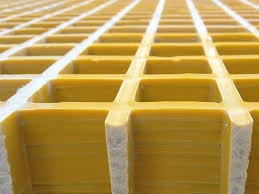- No. 9, Xingyuan South Street, Dongwaihuan Road, Zaoqiang County, Hengshui, Hebei, China
- admin@zjcomposites.com
- +86 15097380338
- Welcome to visit our website!
frp sheet piling
The Advantages of FRP Sheet Piling in Construction
Fiber Reinforced Polymer (FRP) sheet piling has emerged as a revolutionary material in the construction and civil engineering industries, owing to its unique properties that offer numerous advantages over traditional materials like steel and concrete. As urbanization continues to accelerate and environmental sustainability becomes increasingly vital, FRP sheet piling is becoming an essential solution for various construction challenges.
The Advantages of FRP Sheet Piling in Construction
Moreover, FRP materials exhibit exceptional corrosion resistance, making them ideal for applications in harsh environments, such as coastal areas or regions with high levels of salinity. Unlike steel sheet piling that may corrode over time, FRP piles maintain their integrity and appearance, reducing the need for regular maintenance and replacement. This durability enhances the lifespan of structures and minimizes long-term costs for developers.
frp sheet piling

Another advantage of FRP sheet piling is its high strength-to-weight ratio. This property enables it to withstand significant loads, making it suitable for various applications, including retaining walls, flood protection barriers, and support structures in waterfront developments. The ability to bear heavy loads while remaining lightweight is a critical factor for engineers when designing structures that require stability and resilience.
In addition to its physical properties, FRP sheet piling also offers greater design flexibility. These materials can be manufactured in different shapes and sizes to meet specific project requirements. Designers can tailor their configurations to optimize space usage and aesthetic appeal while meeting structural needs.
Sustainability is a growing concern in modern construction, and FRP materials align well with this trend. They are often produced using recycled materials and can be recycled at the end of their service life. The reduced carbon footprint associated with their manufacture and transport further contributes to greener construction practices, appealing to environmentally-conscious stakeholders in the industry.
In conclusion, FRP sheet piling represents a significant advancement in construction materials. Its lightweight nature, corrosion resistance, high strength-to-weight ratio, design flexibility, and sustainability make it an attractive option for modern engineering projects. As the demand for innovative and resilient construction solutions continues to grow, FRP sheet piling is poised to play a crucial role in shaping the future of civil infrastructure. By embracing this material, engineers and developers can create structures that not only meet current needs but are also sustainable for generations to come.
-
GRP Structures: The Future of Lightweight, High-Performance EngineeringNewsJun.20,2025
-
FRP Water Tank: High-Performance Storage for Corrosive and Clean Water SystemsNewsJun.20,2025
-
FRP Square Tube: The New Industry Standard for Chemical and Structural ApplicationsNewsJun.20,2025
-
FRP Pultruded Profiles: The Ultimate Choice for Lightweight Structural StrengthNewsJun.20,2025
-
FRP Handrails: The Safer, Smarter, and Stronger Choice for Modern InfrastructureNewsJun.20,2025
-
FRP Grating: The Smart Solution for Durable, Lightweight Industrial FlooringNewsJun.20,2025
-
Why Choose a Galvanized Water Tank for Your Storage NeedsNewsMay.21,2025
